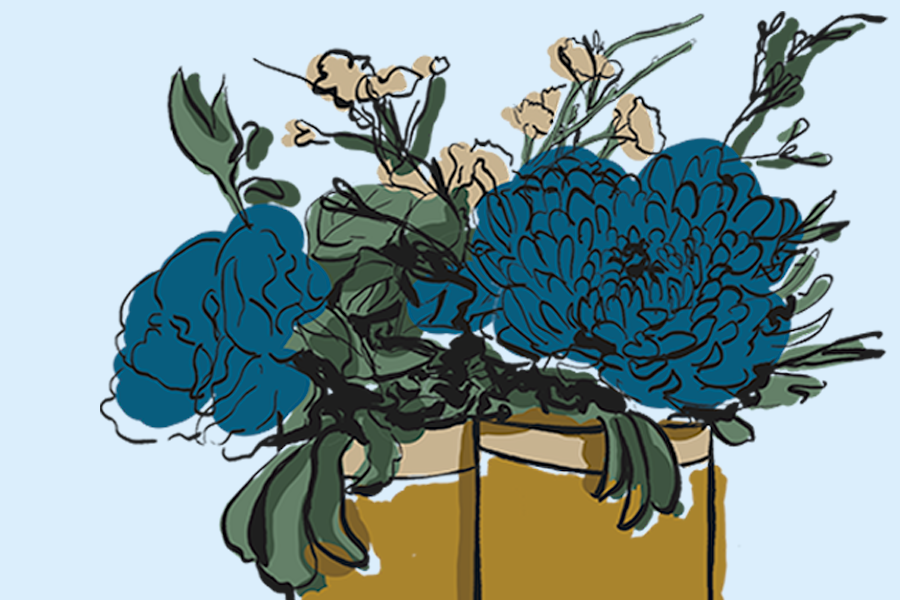How Do Students Discuss Depression?
Comparisons From Different Decades
The ways in which depression is discussed can be meaningful to students and community members.
Alison* swung her legs down from her newly painted pastel desk. She smiled to one side.
“I’m in preschool mentally, but physically, I guess I’m in the 10th grade. I don’t know how I got there. I really didn’t deserve it,” Alison said.
Alison was wearing a bright cardigan and an array of exotic earrings. She is clinically depressed.
“I have some days where breathing makes me tired.” Alison said. “Other days…I feel like I’m dying all the time, like the constant state of a panic attack. And I have some days where I am a completely different person, where I am happy and spunky and I talk to people which is not a common thing for me to do. Those days are rare.”
Alison is part of a new discussion of mental health. She is frank about what she experiences on a day-to-day basis. Alison’s friends and family are aware of her depression. However, the discussion was not always so vocal.
Tulip Edinberg* is a retired high school teacher. She is 64 years old and has her own ideas and experiences of mental health discourse.
“When I was growing up, mental health was kind of a taboo subject,” Edinburg said. “We didn’t talk about it and having someone with mental health issues was an embarrassment. People didn’t recognize it for being the health issue that it was. People thought that those with mental health issues were crazy or unstable, and there were not a lot of drug and treatment options at the time, which is too bad, because now we know better. I am glad that treatment for mental health has become an important issue and there are better ways of dealing with it if you have health insurance and drug prescription.”
Edinberg was a student teacher in her early twenties in Maine, the state of blueberries and Acadia National Park. It was then, fresh out of university, when one of her students took their own life.
“It was a very hard thing for the next couple of weeks because there was an empty chair where she used to sit.” Edinberg said. “ I don’t even think there were grief counselors at the time, which are prevalent now. Everyone was just expected to suck it up and move on. I don’t think that was the right thing to do. There were some undiagnosed depression and suicidal thoughts and nobody recognized the signs or symptoms.”
Edinburg reported that as difficult as it is to manage mental health issues, the stigma against mental health of the 50s and 60s likely did not help with the struggles of mental health issues.
“It was a black mark on your family if you had mental health issues,” Edinberg said. “[Mental health] wasn’t on our radar at the time. It was something that happened on the periphery and unfortunately, people who had [mental health problems] were ostracized. They isolated themselves and probably didn’t interact with people much. If they had it, they were probably pretty good at hiding it.”
Kendra Stevens*, 40 years old and a mother of two, experienced deprivation of meaningful mental health conversations growing up in southern Iowa like Edinburg.
“[I] grew up in the 1980s and 90s and depression—mental health issues—were glossed over.” Stevens said. “The approach by my father was to just ignore it and not discuss it and to just get up and everything will be okay, which is clearly not a healthy approach, we know now…so much, in fact, that it was not until my aunt committed suicide that I knew my aunt was depressed. She had been significantly depressed her entire life, but nobody knew or talked about it until she killed herself.”
Much later, it would take Stevens years to realize she was depressed during her college years. Her therapy would take her into her thirties.
Therapy has just started for Alison, prompted by increasing acknowledgment of her symptoms. Alison described her experience with mental health: “When your painting and the colors just kinda blend into a nice gradient, except I’m standing at the end of the gradient and I’m looking into it and everything just looks like the same muddy color of grey.”
“Since I have become like this, it’s difficult to do anything, anything at all,” Alison said. “I don’t even want to get up in the morning to shower, but I have to because the only thing keeping me from [ ] legitimately insane is keeping up the appearance that I am a put-together person. As soon as you start looking like a crazy person, people tell you that you are a crazy person, and you don’t want to be told you are a crazy person because then you know it’s true.”
What she describes is not unusual. The rates of teen depression have been rising since 2008. While sources disagree on the causes of the mental health epidemic, research has suggested that social isolation does not help.
“They for sure talk about it more, but as far as resources and people’s approach to it, I don’t know if we have made any improvements.” Kendra said. “As a nation, we have significantly decreased our mental health resources. We have made it so that it is a lot harder for people to receive help and treatment. There’s a huge lack of any meaningful discussion of mental health in our nation and anywhere in our state. We have ERs that are overrun with patients with mental health problems because we don’t have any other places for them to go, and they need help. Our insurance doesn’t cover psychiatric drugs, they don’t provide counseling, we have month-long lists for therapists, we have month-long lists for psychologists. People are not getting the help that they need. There is a lack of investment by our government for mental health resources.”
There are ways to help those who are dealing with mental health issues. Overwhelming research has suggested that the act of simply talking about mental health early, especially in a school setting, could benefit those who will struggle with it later in life.
Edinberg agrees. “They might have someone in the house who is going through something and they might be a kindergartener,” she said. “And understand that, you know, ‘Mommy’s not feeling well. Mommy is sad today.’ I don’t think it’s too early to start. Now, I don’t think we should burden them with they heavy things like bipolar and schizophrenia. But I think kids should understand that seasonal or occasional depression is something that is completely normal and should be treated and can be treated.”
Stevens acknowledges that her experience with depression in college, and the resources offered, were not timely.
“That discourse and that discussion should have occurred in junior high and high school,” Stevens said. “College came too late.”
Being a parent, Stevens has taken an active role in her family’s discussion of mental health.
“I keep it at an age-appropriate level,” Stevens said. “I try to teach my almost-teenage daughter stress coping skills to try to put things in perspective. With my son, again, it is age-appropriate. It’s ensuring that he has the tools to feel safe and secure in his life.”
Alison concurred with a caveat.
“[I think] it would only help on the specific basis that a profession talks about it,” Alison said. “Also, that’s tricky because people who are struggling with mental health issues are a lot more sensitive. What I am trying to say is that I think they would, but different people would benefit from different takes on how the school district would go about it.”
Above all, it is important for people who know those struggling with mental health issues to let them talk freely about what they are experiencing.
“I think that a lot of people tend to feel misunderstood, especially with people who are different from them,” Alison said. “If there is anything that I could give to the world and humanity, it would be more empathy for each other, because I think that would fix a lot of the world’s problems, if we could just understand each other better.”
______________________________________
*Would like to remain anonymous
Your donation will support the student journalists of Iowa City High School. For 2023, we are trying to update our video and photo studio, purchase new cameras and attend journalism conferences.

01010011 01100101 01101110 01100100 00100000 01001000 01100101 01101100 01110000 00101110 00100000 01010100 01110010 01100001 01110000 01110000 01100101...



































